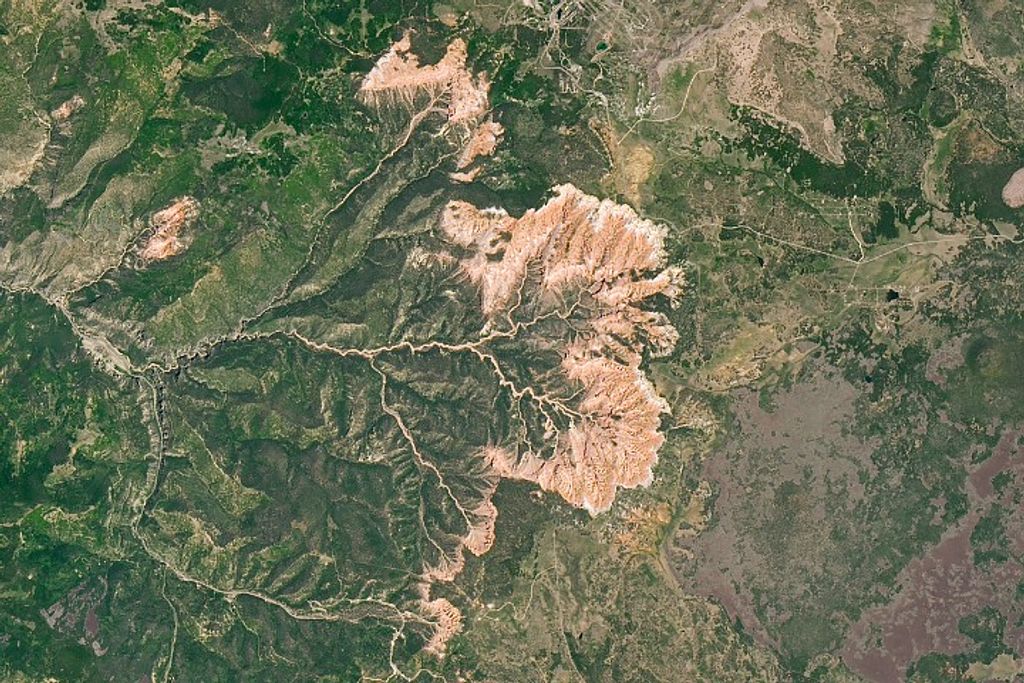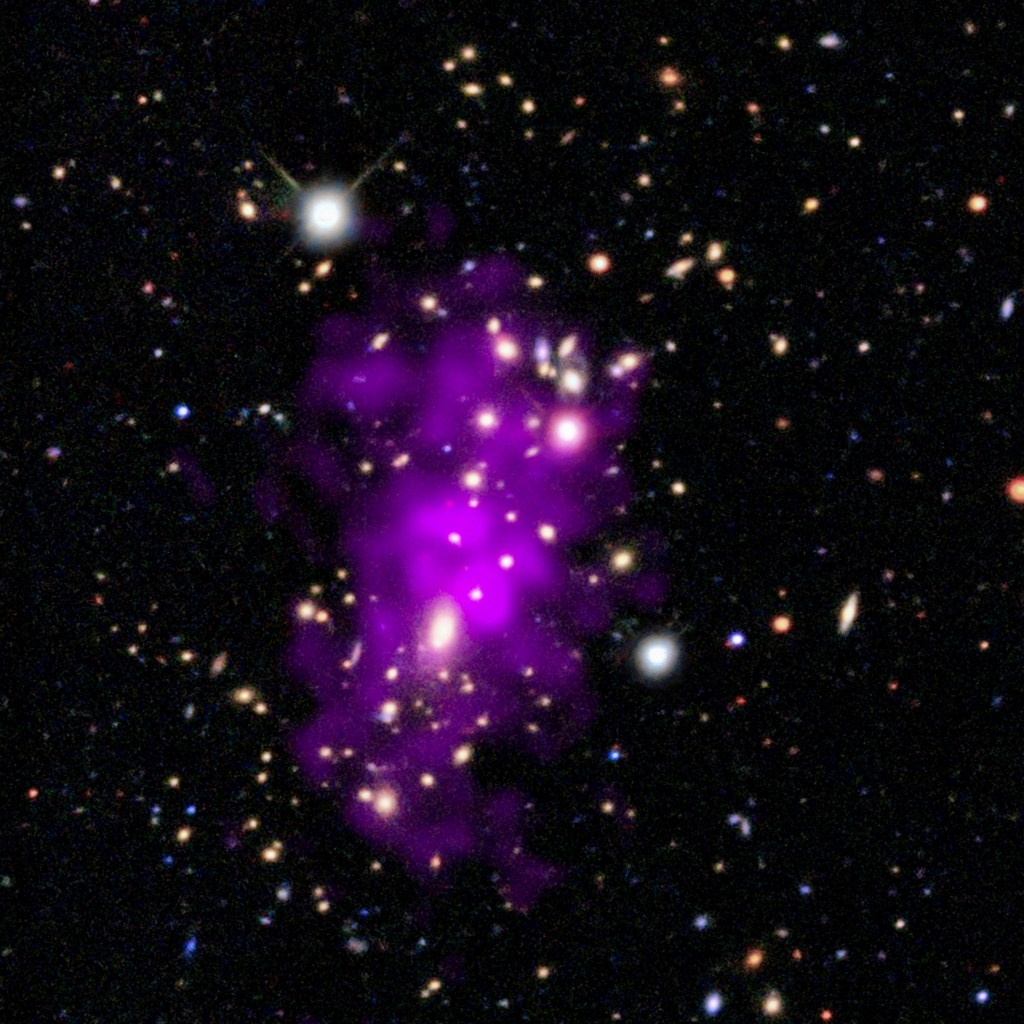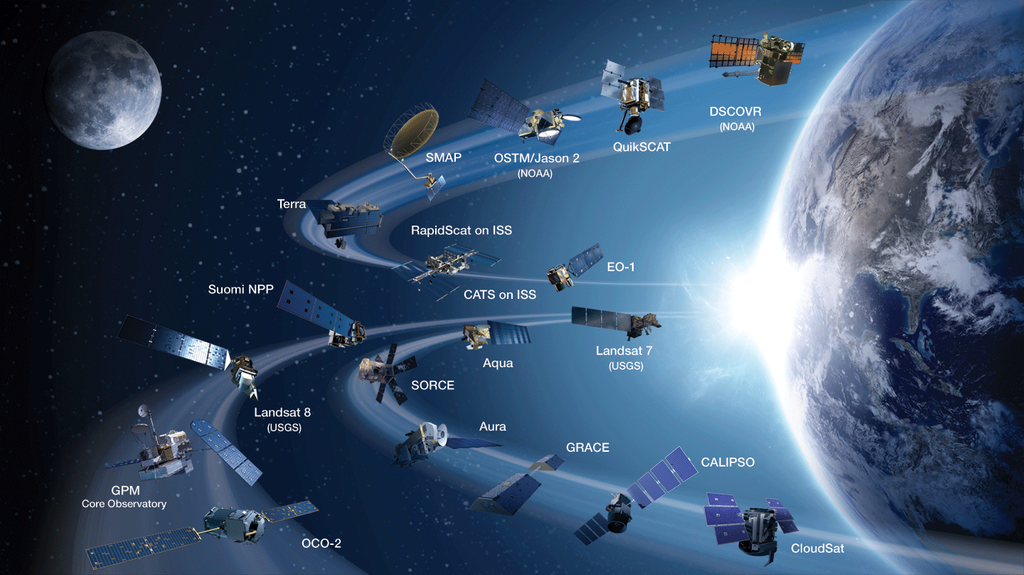1 min read
AM 2026-424

When astronomers peer deep into space, they don't expect to find something staring back at them.
In this new Hubble Space Telescope image, an uncanny pair of glowing eyes glares menacingly in our direction. The piercing "eyes" are the most prominent feature of what resembles the face of an otherworldly creature.
But this is no ghostly apparition. Hubble is looking at a titanic head-on collision between two galaxies.
Each "eye" is the bright core of a galaxy, one of which slammed into another. The outline of the face is a ring of young blue stars. Other clumps of new stars form a nose and mouth. The entire system is catalogued as Arp-Madore 2026-424 (AM 2026-424), from the Arp-Madore "Catalogue of Southern Peculiar Galaxies and Associations."
Although galaxy collisions are common—especially back in the young universe—most of them are not head-on smashups, like the collision that likely created this Arp-Madore system. The violent encounter gives the system an arresting "ring" structure for only a short amount of time, about 100 million years. The crash pulled and stretched the galaxies' disks of gas, dust, and stars outward. This action formed the ring of intense star formation that shapes the nose and face.
Ring galaxies are rare; only a few hundred of them reside in our larger cosmic neighborhood. The galaxies have to collide at just the right orientation to create the ring. The galaxies will merge completely in about 1 to 2 billion years, hiding their messy past.
The side-by-side juxtaposition of the two central bulges of stars from both galaxies also is unusual. Because the bulges that make the eyes appear to be the same size, it is evidence that two galaxies of nearly equal proportions were involved in the crash, rather than more common collisions where small galaxies are gobbled up by their larger neighbors.
Hubble observed this unique system as part of a "snapshot" program that takes advantage of occasional gaps in the telescope's observing schedule to squeeze in additional pictures.
Astronomers plan to use this innovative Hubble program to take a close look at many other unusual interacting galaxies. The goal is to compile a robust sample of nearby interacting galaxies, which could offer insight into how galaxies grew over time through galactic mergers. By analyzing these detailed Hubble observations, astronomers could then choose which systems are prime targets for follow-up with NASA's James Webb Space Telescope, scheduled to launch in 2021.
Astronomer Halton Arp published his compendium of 338 unusual-looking interacting galaxies in 1966. He later partnered with astronomer Barry Madore to extend the search for unique galactic encounters in the southern sky. Several thousand galaxies are listed in that survey, published in 1987.
The Hubble image of AM 2026-424 was taken June 19, 2019, in visible light by the Advanced Camera for Surveys. The system resides 704 million light-years from Earth.
About the Object
- R.A. PositionR.A. PositionRight ascension – analogous to longitude – is one component of an object's position.20:29:31.9
- Dec. PositionDec. PositionDeclination – analogous to latitude – is one component of an object's position.-42:30:15
- ConstellationConstellationOne of 88 recognized regions of the celestial sphere in which the object appears.Microscopium
- DistanceDistanceThe physical distance from Earth to the astronomical object. Distances within our solar system are usually measured in Astronomical Units (AU). Distances between stars are usually measured in light-years. Interstellar distances can also be measured in parsecs.704 million light-years
- DimensionsDimensionsThe physical size of the object or the apparent angle it subtends on the sky.Image is about 1.3 arcmin across.
About the Data
- Data DescriptionData DescriptionProposal: A description of the observations, their scientific justification, and the links to the data available in the science archive.
Science Team: The astronomers who planned the observations and analyzed the data. "PI" refers to the Principal Investigator. - InstrumentInstrumentThe science instrument used to produce the data.ACS/WFC
- Exposure DatesExposure DatesThe date(s) that the telescope made its observations and the total exposure time.June 19 and July 8, 2019
- FiltersFiltersThe camera filters that were used in the science observations.F606W, F814W
- Object NameObject NameA name or catalog number that astronomers use to identify an astronomical object.AM2026-424
- Object DescriptionObject DescriptionThe type of astronomical object.Pair of interacting galaxies
- Release DateOctober 28, 2019
- Science ReleaseMenacing-Looking ‘Face’ Formed by Titanic Smashup Between Two Galaxies
- CreditNASA, ESA, Julianne Dalcanton (UWashington), Benjamin Williams (UWashington), Meredith Durbin (UWashington)

These images are a composite of separate exposures acquired by the ACS/WFC instrument on the Hubble Space Telescope. Several filters were used to sample narrow wavelength ranges. The color results from assigning different hues (colors) to each monochromatic (grayscale) image associated with an individual filter. In this case, the assigned colors are: Cyan: F606W Orange: F814W

Related Images & Videos

Compass Image of AM 2026-424
Image of interacting galaxies AM 2026-424, with compass arrows, scale bar, and color key for reference. The north and east compass arrows show the orientation of the image on the sky. Note that the relationship between north and east on the sky (as seen from below) is flipped...
Share
Details
Claire Andreoli
NASA’s Goddard Space Flight Center
Greenbelt, Maryland
claire.andreoli@nasa.gov






























